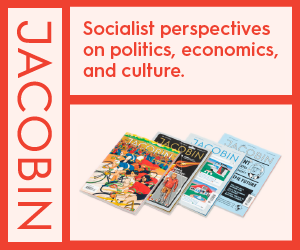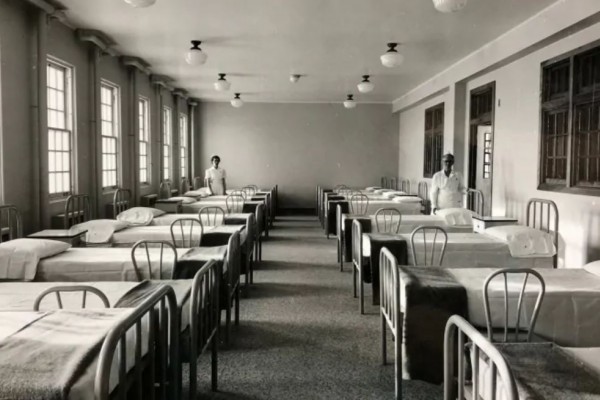COVID-19: a perfect storm?
If the virus has fight left in it, mere hope will do nothing to deter future variants and waves

Image by Leon Cheung/Blendswap
As we approach a third pandemic spring in Canada we are surfing down the tail of a fifth COVID-19 wave. The spring weather promises open windows and more outdoor activities, which decreases viral transmission. Furthermore, being a rapid spreader, the Omicron variant has been infecting millions, but because most of us (at least in countries like Canada) are now well-vaccinated, the majority of those infected have been suffering relatively mild symptoms, creating the sense that we can start returning to pre-pandemic life, and live with COVID-19 as if it were another one of the coronavirus colds already circulating in the population.
The coincidence of the coming spring, the Omicron tail, and thorough vaccination coverage seems to be lighting the fuse for an explosive rebound from two years of restrictive pandemic measures, propelling everyone toward a summer of freedom. We may even hope we are riding out the pandemic’s final wave.
During our first pandemic spring, I wrote an essay for Canadian Dimension, in which I explored what we knew then about the new virus in the context of Albert Camus’ seminal 1947 novel The Plague. Two years later, the message remains similar: if COVID-19 has fight left in it, mere hope will do nothing to deter it. After five waves we are permitted to cross our fingers, but we are obliged to prepare for more.
One of the leading characters in The Plague is Father Paneloux, an intelligent priest who volunteers in the plague hospital. At a crucial juncture, Paneloux is confronted with the suffering and death of an innocent child, which forces him to try to reconcile the seemingly senseless, utterly indifferent forces of the plague with his own faith in the fundamental intelligibility and goodness of God’s creation. In the end, he has to believe that the child did not suffer and die in vain—that somehow even the plague is part of creation and that all of creation is good.
Later, Paneloux himself falls sick and dies, but it is crucial to notice that he dies without exhibiting the symptoms of the plague. In this masterful stroke of fiction, Camus has his character actually succumb to what he called “metaphysical suicide” in his 1942 essay The Myth of Sisyphus. To commit metaphysical suicide is not to kill oneself, but rather to kill one’s mind by surrendering to the hope that reality is on our side and does not contain brutally indifferent forces such as plagues. To give in to such hope is to turn away from the struggle that makes us human—the struggle with a reality that is indifferent to us. It is to choose fantasy, and in so doing deny human reality by rejecting the very reality with which we must struggle in order to make ourselves who we are.
We are obliged to grapple with our plagues.
It is often said that if COVID-19 were as lethal as a plague-like disease such as Ebola we would be in serious trouble. The super transmissibility of the novel coronavirus combined with the super lethality of Ebola would constitute a perfect storm of global suffering and death. As it is, COVID-19 is only mildly lethal. We seem to have been lucky.
According to the World Health Organization, Ebola Virus Disease (EVD), like COVID-19, “is transmitted to people from wild animals and spreads in the human population through human-to-human transmission,” but unlike COVID-19, the “average EVD case fatality rate is around 50%.”
We have had half-a-billion COVID-19 cases to date, which, with EVD’s death rate of 50 percent, would have killed 250 million people around the world.
The majority of cases of COVID-19 present with symptoms that range from being unnoticeable to being something like a bad flu. They do not usually require medical treatment, and many are not reported to public health. Thus, the rate of death in terms of the actual number of cases is impossible to determine with precision. However, we do know the rate of death in terms of the number of confirmed cases. According to Johns Hopkins University’s Coronavirus Resource Center, in Canada and the United States, for example, the rates are 1.1 and 1.2 percent, respectively, which is between 5.5 and 12 times worse than the rates in Norway, Denmark and Australia, which at between 0.1 and 0.2 percent are among the lowest national rates in the world. Apart from Yemen, which is in severe crisis because of a brutal war that began there about eight years ago, the worst hit countries are Mexico, Peru and Egypt, with rates between five and six percent, which are between four and seven times worse than those in Canada and the US.
Canadians might be concerned both that the death rate in Canada—one of the wealthiest (per capita) countries in history—is many times worse than in peer countries like Norway, Denmark and Australia, and that our continental neighbour and trading partner Mexico has one of the worst death rates in the world. Canada certainly has the resources to do better for its citizens and neighbours. Also concerning is the possibility that Canada welcomes profit-making from arms sales to belligerents in the devastating war in Yemen, the site of a humanitarian crisis and a soaring 18 percent COVID-19 death rate.
Nevertheless, death rates between about 0.2 and 6.0 percent in most of the world are well below EVD’s average death rate of 50 percent, which again suggests that COVID-19 is indeed only mildly lethal.
However, because viruses need hosts within which to reproduce, a very lethal virus mitigates its own transmission by killing its hosts before they can become launching pads for further transmission. Surprisingly, high transmissibility can be deadlier than high lethality.
For most of us, the very name “Ebola” is frightening. However, according to the WHO’s chronology of all known EVD outbreaks, it has killed a total of 15,304 people since 1976. By contrast, COVID-19 has killed six million people in two short years, which, in terms of the global count of half-a-billion cases, generates an average global death rate of 1.2 percent—equal to the COVID-19 death rate in the US, and only 0.1 percent worse than the Canadian rate.
Even though we have fought back with local, national and international measures, an average of nearly 8,000 people have died from COVID-19 every single day since about April 2020. For more than 700 days straight, every day or two COVID-19 has killed at least as many people as EVD killed in 46 years. More than twice as many people have been killed by COVID-19 in Canada alone since the spring of 2020 than have been killed by EVD in the entire world since 1976. Could COVID-19 be its own perfect storm?
Fundamentally, what makes COVID-19 deadly is the mode of transmission of SARS-CoV-2, the virus that causes the disease.
It is as if the forces that constitute SARS-CoV-2 provide it with the power to virtually erase pre-pandemic interpersonal physical distances. Transmission faces nearly zero effective resistance whenever we revert to pre-2020 interaction and behaviour. The virus acts as if most of its power is dedicated to the primary goal of leaping to other hosts, again and again, ad infinitum. Because its internal economy spares little power for the effects of disease, serious cases (involving hospitalization, ICU-care and intubation, long COVID, and death) arise mostly in the small fraction of the population with comorbidities that generate vulnerability.
But this generates a second crucial feature of the virus’s mode of transmission. A significant proportion of its transmission goes largely or completely undetected, even by hosts themselves. This is the complicating logic of asymptomatic spread. Able to leap from hosts that exhibit very mild symptoms, or no symptoms at all, SARS-CoV-2 adds stealth to its incredible ability to leap, generating a bio-toxin that works its way through populations at viral light-speed.
The medical professionals in Wuhan, China who tried to sound the alarm in December 2019 that “SARS is back” are heroes, but their bravery was followed by public health policies based on symptoms-screening, which amounted to a major failure to think outside the SARS box. If SARS was almost always detectable by its symptoms, SARS-CoV-2 was not, so that symptoms-based screening was ineffective at stopping the transmission of the virus around the world within weeks. For two years, SARS-CoV-2 has evaded our efforts to contain it. Before we know it, COVID-19 anywhere is COVID-19 everywhere.
But, that is not all. Not only does its mode of transmission add stealth to the virus’s incredible ability to leap. It also spreads so readily that it reaches many different environments in which unique pressures generate variants and sub-variants that come back at us with modified characteristics. Vaccination drives in countries like Canada have been phenomenal, but as wealthier countries boost and move on to fourth doses, only 55 percent of the world population has been vaccinated with a complete initial protocol. Even if some of us are vaccinated enough to lift restrictions, SARS-CoV-2 continues to circulate around the world, nearly half of which is either incompletely vaccinated or completely unvaccinated. “It mutates as it’s transmitting,” as one researcher put it, possibly in both human and animal populations. Somewhat analogously to the way in which influenza has shifted every season for as long as we can remember, shape-shifting is another feature of SARS-CoV-2’s mode of transmission. There will be more, like the Omicron sub-variant BA.2 now beginning to replace the original Omicron.
But, again, that is not all. Not only does SARS-CoV-2’s mode of transmission include an incredible ability to leap from human to human, a stealth factor, and a capacity for shape-shifting, it also creates or exacerbates real conditions for political division among us, which degrades our ability to fight the virus. Although all of us are launching pads for SARS-CoV-2, its mode of transmission actually divides us: on the one hand, most of us are little more than launching pads; on the other hand, a small fraction of us are also waiting victims for its most serious effects, including death (though it is not always clear who will be a victim).
Of course, a small fraction of all of us is a very large number, already trending past six million dead. And because SARS-CoV-2 both spreads at viral light-speed, and shape-shifts, ever renewing its attack, measures intended to mitigate its spread to save the vulnerable millions require restricting the interactions of billions.
For two years, we have been coping with restrictions. The restrictions have had general support, but from the beginning there have been people for whom they have been problematic. These people want their “freedom” back. Thus, the restrictions have warranted various levels of resistance, generating real political pressures to rescind them. The result has been a shifting patchwork of restrictions. More and more, there will be demands for the end of restrictions.
EVD threatens to kill everyone it touches without distinction (although it touches only a few). By contrast, SARS-CoV-2 divides us into two distinct groups, generating conditions for political conflict. We fight amongst ourselves over restrictions, decreasing the overall effectiveness of our fight against a bio-toxin that appropriates all of us in order to find and attack the vulnerable millions among us.
We all cherish freedom, but freedom is complicated. For example, although I might wish to be free to drive 250 kilometres per hour, if we were all free to do so there would be many more driving, cycling and pedestrian accidents, injuries and fatalities on the roads, which would make many of us do our best to avoid them. In this example, a superficial freedom ends up limiting the practical freedom to use the roads. The choice between living in a jurisdiction without speed restrictions, and living in one with reasonable limits, is a choice between access to dangerous roads and access to safe ones. The restrictions actually enhance the practical freedom to use the roads.
Vaccinations, masks, and physical distancing are similar. The choice between no COVID-19 measures and reasonable ones is a choice between dangerous interaction and behaviour leading to short and long term increased rates of illness and death, on the one hand, and safe interaction and behaviour, reduced illness and death, and a better long term prognosis of reducing the threat of COVID-19, on the other.
If we were free to interact in any way we chose—without vaccinations, masks, and physical distancing—the COVID-19 death count would be much greater than six million. As we have seen, the ability of the virus to spread in populations around the world is a factor both in its ability to develop variants, and for those variants to come back to attack us. Developing measures to interdict its spread, and sharing those measures with the entire world, is the only way to significantly reduce the effects of the disease in the long run.
Political conflict is not necessitated by the division generated by the virus’s mode of transmission, but opportunists and pre-existing political interests are exploiting the division. Within the echo-chambers of social media, a witches’ brew of pandemic-weary, susceptible and disenchanted people, as well as more threatening reactionary elements, is being incited to resist. Those on the wrong sides of systemic job displacement and the growing gap in incomes and wealth, as well as those susceptible to fear-mongering regarding both progressive identity politics, and the massive reorientations needed to deal with climate change—to mention the most obvious—are the prey of shameless influencers in the service of their own narrow interests (of recognition, wealth and power), but also often in the service of trends in neoliberalism, ultraconservatism and extreme nationalism. More and more of those who feel that the pandemic has been overblown—many of whom are mere launching pads, and not victims of serious illness—have been heeding the call to resist.
The virus has also divided those with privilege and the means to avoid a great deal of suffering, on the one hand, from those disadvantaged by various forms of discrimination who have had to experience the virus much more directly, on the other. In these cases, pre-existing inequities have been exacerbated by the virus, which has in turn added many of the disadvantaged to the category of those vulnerable to the serious effects of the virus, increasing hospitalization and deaths.
Division extends to the global inequalities that allow the Global North to move to third and fourth doses while the rest of the world struggles to get first and second doses, which puts many more lives at risk than providing a complete first protocol of doses for everyone (before moving to additional doses) would do. Paradoxically, boosting with third and fourth shots in the wealthy countries, which delays completion of the first round of vaccination in the rest of the world, increases the likelihood of variant shape-shifting. Thus, SARS-CoV-2’s interaction with the global means-divide tends to generate more variants and waves.
Although vaccination continues to decrease the severity of COVID-19, even against Omicron, it does not halt transmission. Thus, whenever we relax mitigation measures, before we know it, the virus finds transmission pathways near and far. And, wherever it finds pathways, it finds victims—especially the under-vaccinated and those with comorbidities—generating spikes in the number of cases of serious illness, which overwhelms health care systems already bogged down by the mitigation measures needed to interrupt pathways within medical facilities. Omicron leaps from human to human more quickly than the previous variants, and it is a devilish divider: because so many have suffered very mild Omicron infections, we feel we may abandon restrictions in order to live with the virus, but it still finds and kills the vulnerable, and in so doing it may strain our health care systems, reducing the availability of health care for all.
The transmission of SARS-CoV-2 is speedier than we can handle. Even with high rates of vaccination, the virus can both overload health care systems and generate problematic variants. Although we have weapons with which to fight it, influencers are inciting us to fight each other rather than the virus. With both six million dead, and a continuing toll of some 8,000 more per day, COVID-19 is a far greater threat than Ebola. It is its own perfect storm, and we may be caught in its midst for some time yet.
Like the character Estragon in Samuel Beckett’s Waiting for Godot, who says at one point, “I can’t go on like this,” each and every one of us is sick and tired of COVID-19. However, Beckett has his character Vladimir reply: “That’s what you think.”
John Duncan is director of the Ethics, Society and Law program at Trinity College, and academic director of the Ideas for the World program at Victoria College, in the University of Toronto. Follow him on Twitter @John__Duncan.










